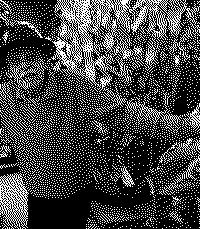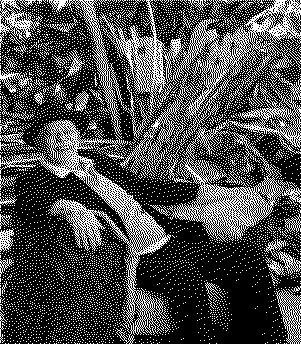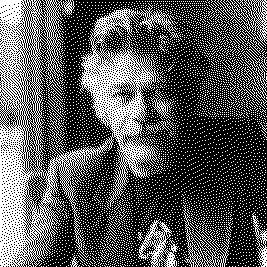Artists/John Chamberlain
Fast Facts
Sculptural Innovations
He is best known for his sculptures made from compressed car parts, which he began creating in the late 1950s. These works transformed everyday, industrial materials into dynamic, abstract forms.
Color and Form
Chamberlain's sculptures are notable for their integration of color and form. The original paint on the car parts added vibrant, often unexpected colors to his work, contrasting with the raw, twisted metal forms.
Influence of Abstract Expressionism
His work was influenced by Abstract Expressionism, particularly in its emphasis on spontaneity and dynamic expression. Chamberlain's approach to sculpture paralleled the gestural brushwork of Abstract Expressionist painters.
Diverse Mediums
Besides his famous metal sculptures, Chamberlain also worked with other materials, including foam, paper, and Plexiglas, and explored photography and film.
Biography



John Chamberlain, born on April 16, 1927, in Rochester, Indiana, and passed away on December 21, 2011, in New York City, was a prominent figure in American art, known for his Abstract Expressionist sculptures.
His early life saw a tumultuous beginning, marked by his parents' divorce when he was just four, leading him to live with his grandmother in Chicago. Despite an early interest in music, Chamberlain found his true calling in the visual arts, a journey that began in earnest after a rebellious teenage phase and a stint in the Navy during World War II. Following the war, Chamberlain explored various artistic endeavors, initially studying hairdressing on the GI Bill before transitioning to art after discovering his talent for sketching and his love for the masterworks at the Art Institute of Chicago (The Art Story) (Encyclopedia Britannica).
Chamberlain's artistic vision was shaped significantly by his time at the Art Institute of Chicago and Black Mountain College, where he began working with metals and was exposed to a rich environment of collaboration and innovation. The influence of Black Mountain College, a hub for avant-garde artists, poets, and educators, was profound, embedding in Chamberlain a love for improvisational techniques and the interplay of materials and forms. His move to New York marked a pivotal moment, where he transitioned to using automotive parts in his sculptures, leading to his signature style of crumpled, welded pieces that evoke a sense of frozen movement and vibrant dynamism (Encyclopedia Britannica).
Throughout his career, Chamberlain's work underwent several transformations, experimenting with materials ranging from Plexiglass and polyurethane to industrial rubber and aluminum foil. However, he is most renowned for his innovative use of discarded automobile parts, which he manipulated into large, colorful sculptures that challenged traditional notions of sculpture and abstraction. His works are characterized by their emotional intensity, a hallmark of Abstract Expressionism, and their ability to convey movement and energy through static forms (Encyclopedia Britannica).
Chamberlain's sculptures, often coated in bright industrial paints, are distinguished by their complex assemblages of crumpled and jammed car parts, creating effects that capture moments of isolated, kinetic energy. Notable works like "Shortstop" (1957) and "Mr. Press" (1961) exemplify his unique approach to sculptural composition, merging the mechanical and the organic into cohesive, dynamic forms. The 1970s oil crisis even saw him incorporating oil barrels into his work, a testament to his ability to adapt and respond to the materials and socio-political contexts of his time (Encyclopedia Britannica).
Beyond his sculptures, Chamberlain's legacy includes a fascination with film, further showcasing his multifaceted creativity. He made a significant impact on the art world, evidenced by his works being featured in prestigious collections such as the Centre Pompidou in Paris, the Guggenheim Museum in New York, and the Tate Modern in London. His innovative spirit and the emotional depth of his work have cemented his place as a key figure in post-war American art (Wikipedia).
Importance
John Chamberlain's contributions to the art world are substantial and multifaceted, establishing him as a significant figure in the post-war American art scene. His importance can be encapsulated through various dimensions of his work and influence:
Pioneering Use of Automobile Parts
Chamberlain is renowned for his innovative sculptures made from crushed and welded automobile parts. This choice of material was not only distinctive but also placed him at the intersection of Abstract Expressionism and Pop Art, blurring the lines between industrial decay and aesthetic beauty (The Art Story) (Artsy).
Abstract Expressionism and Beyond
While he is often associated with his car sculptures, Chamberlain's oeuvre is diverse, including abstract paintings, films, photographs, and sculptures made from materials such as foam, rubber, and paper. His work reflects a deep engagement with the Abstract Expressionist movement, emphasizing emotional intensity and gestural creation (Artsy).
Exploration of Form and Material
Chamberlain's art is characterized by an emotional approach to concept and execution, with his sculptures showcasing an expressive plasticity of industrial materials. This exploration extended beyond metal to include Plexiglass, paper, polyurethane, industrial rubber, and aluminum foil, demonstrating his relentless experimentation and innovation (Encyclopedia Britannica).
Impact on Art and Culture
His sculptures are seen as commentary on American culture, specifically the post-war fascination with automobiles, representing freedom, wealth, and technological prowess. Critics have noted that his work encapsulates both the utopian and the nightmarish aspects of car culture, embodying the dualities of American society during the 20th century (Artsy).
Temporal Confusion and Legacy
Chamberlain's work plays with temporal confusion, simultaneously evoking the past and the future of objects and their cultural significance. This aspect, alongside his broad influence across different media, cements his place in art history as a creator whose work transcends simple categorization and speaks to the complexities of American identity and industrialization (Artsy).
Technique
John Chamberlain's technique in creating his iconic sculptures can be summarized through several key approaches that highlight his innovative use of materials and artistic vision:
Welding and Assembling Discarded Automobile Parts
Chamberlain's most recognizable technique involves the welding and assembling of discarded automobile parts, such as fenders, bumpers, and hoods. This method allowed him to create vibrant, dynamic sculptures that juxtapose the industrial origin of the materials with the organic forms of his sculptures. He often emphasized the malleability of steel, manipulating it to explore contrasts and soften the impression of jagged metallic edges (The Art Story).
Exploration with Various Materials
Beyond his signature automobile parts, Chamberlain experimented with a wide array of materials throughout his career. This included using common household sponges, large blocks of foam rubber, galvanized steel, aluminum foil, Plexiglas, and brown paper bags. Each material brought a different texture and possibility, allowing Chamberlain to continuously reinvent his sculptural language (The Art Story).
Intuitive Creation Process
Chamberlain's approach was deeply intuitive, closely aligning with the Abstract Expressionist painters' use of gestural, instinctive brushstrokes. He often worked without a predetermined plan, allowing the sculpture to evolve naturally. This method echoes his sentiment that the creation process involved putting things on and taking them off until it felt right, underscoring the importance of knowing when to stop (Wikipedia).
Color and Texture
The use of color was another significant aspect of Chamberlain's technique. He utilized the brilliant colors of automotive paint to bring his sculptures to life, adding another layer of complexity and depth to the twisted metal. In some cases, he applied additional coatings, such as aluminum paint, to further refine the texture and appearance of his works (The Art Story).
Conceptual and Physical Stance
Chamberlain frequently compared the "stance" of his sculptures to the positions and attitudes of the human body, exploring how a sculpture occupies its space. This attention to the physical and conceptual presence of his works encouraged viewers to engage with them from multiple vantage points, enhancing the interactive aspect of his art (The Art Story).















